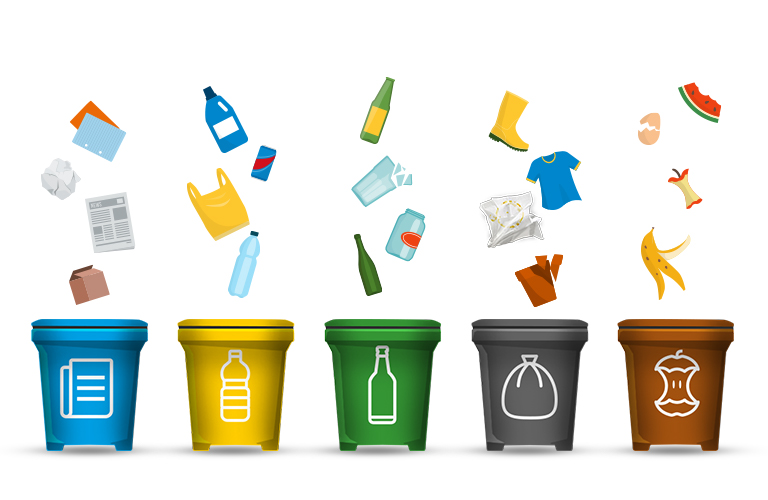How to segregate waste?
Throwing waste into the right bin takes minimum effort. Meanwhile, reuse of recycled materials results in lower consumption of natural resources, which, as we know, are exhaustable. See how to segregate waste correctly!

Yellow container – metals and plastics
- plastic bottles,
- yoghurt, cheese packaging etc.,
- plastic bags,
- cosmetics packaging,
- beverage cartons,
- cans and tins,
- small iron scrap,
- non-construction polystyrene.
Important! The packaging should not contain motor oil, paint or other chemicals.
Blue container – paper
- grease-free paper and cardboard packaging,
- paper bags,
- newspapers and magazines,
- catalogues and leaflets,
- office paper,
- notebooks and books,
- wrapping paper.
Important! Remove metal staples or other elements from the paper.
Green container – glass:
- glass bottles,
- jars,
- glass cosmetics packaging.
- Important! Don’t break the glass before you throw it in the bin.
Brown container – bio waste
- vegetable and fruit peelings,
- fruit cores,
- leftover food of plant origin,
- coffee and tea grounds.
Important! Do not throw food leftovers of animal origin into the container.
Black or grey container – mixed waste
- greasy paper,
- dirty foils,
- used paper towels,
- lacquered and film-coated paper,
- diapers,
- sanitary towels,
- cotton pads,
- table glassware,
- porcelain,
- heat-resistant glass,
- mirrors,
- leftovers of food of animal origin (meat, cold cuts, cheese, egg leftovers, etc.)
- edible oil,
- chewing gum.
Important! Do not dispose of leftover meat or bones in a plastic bag.

